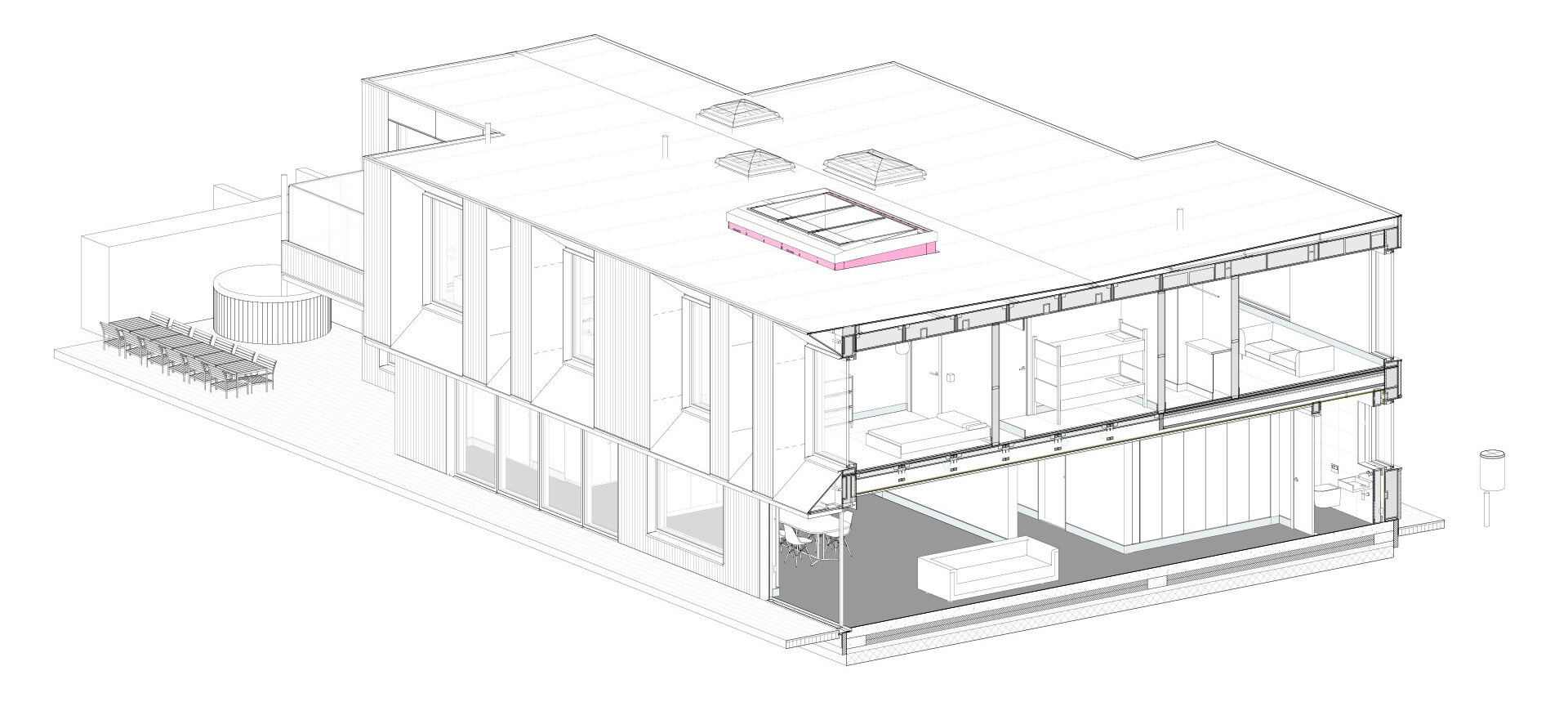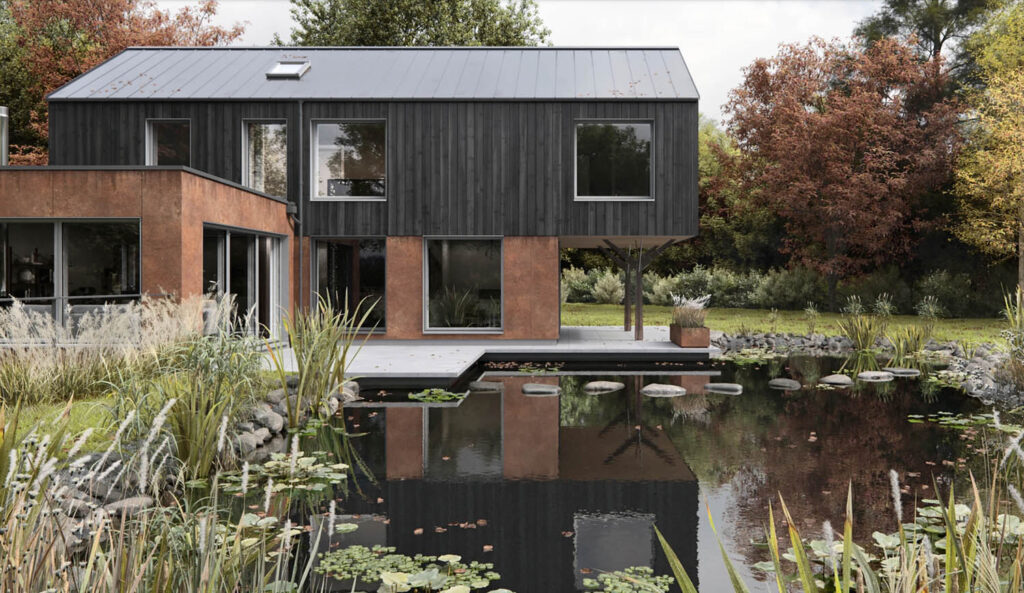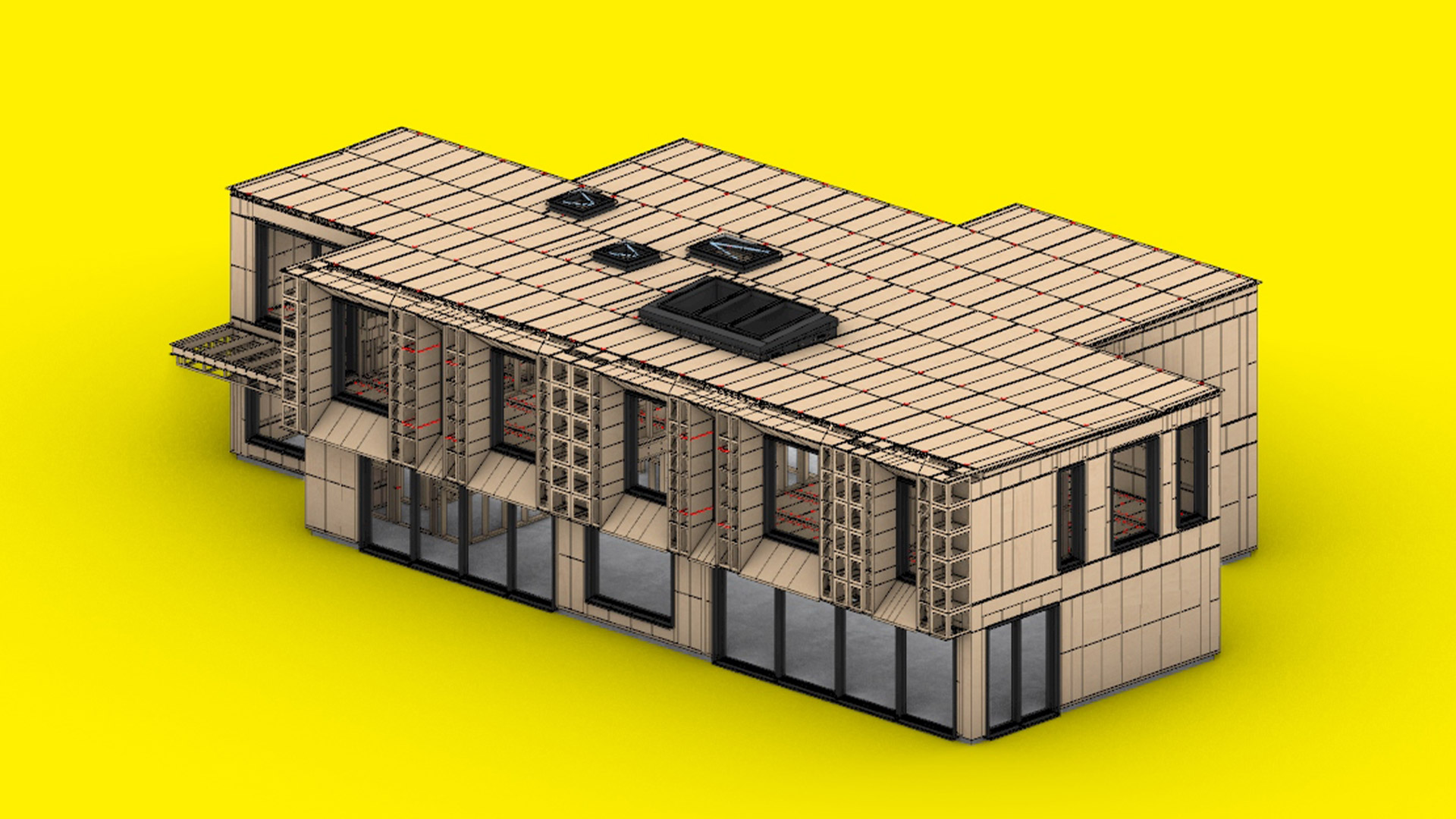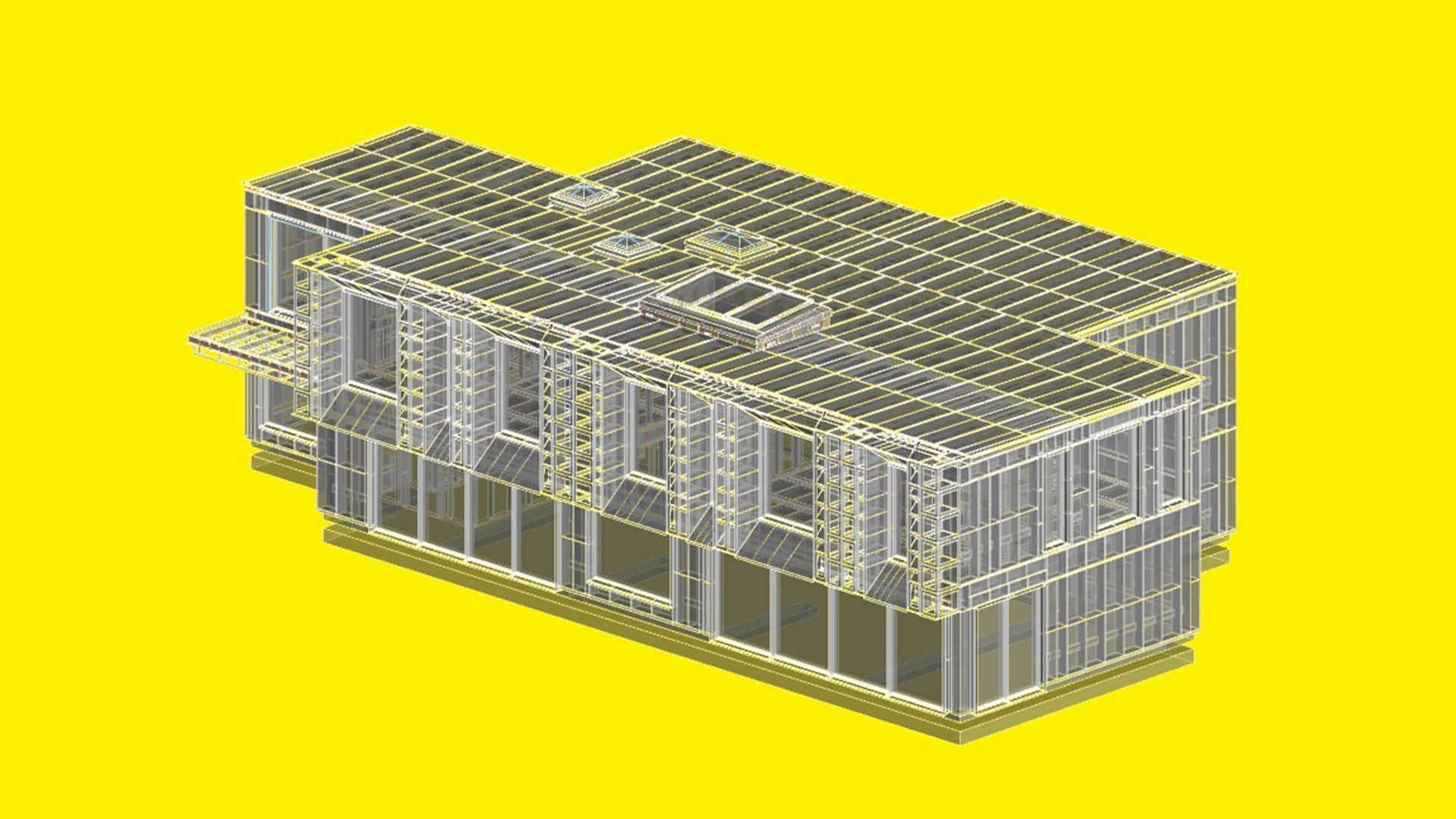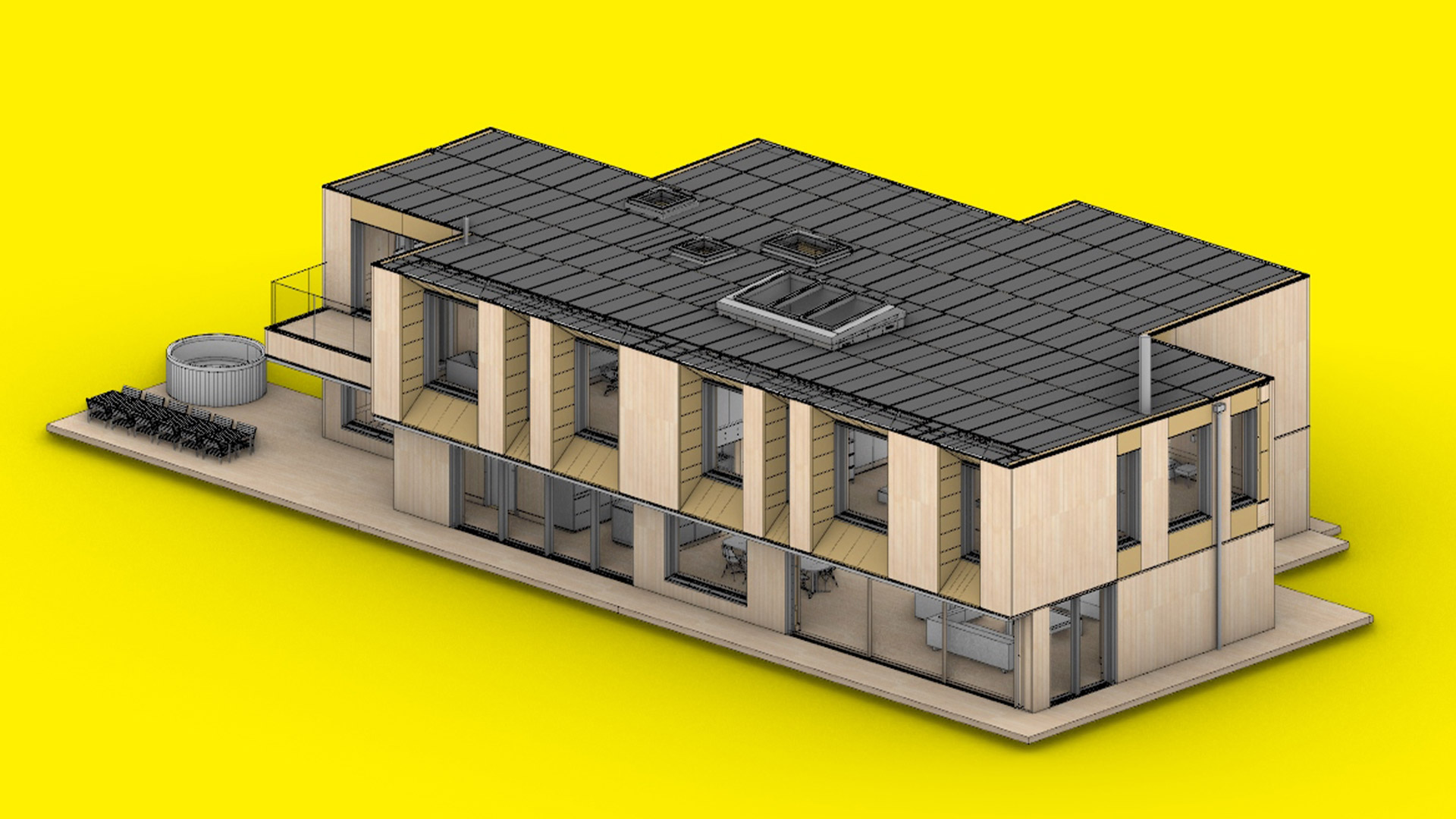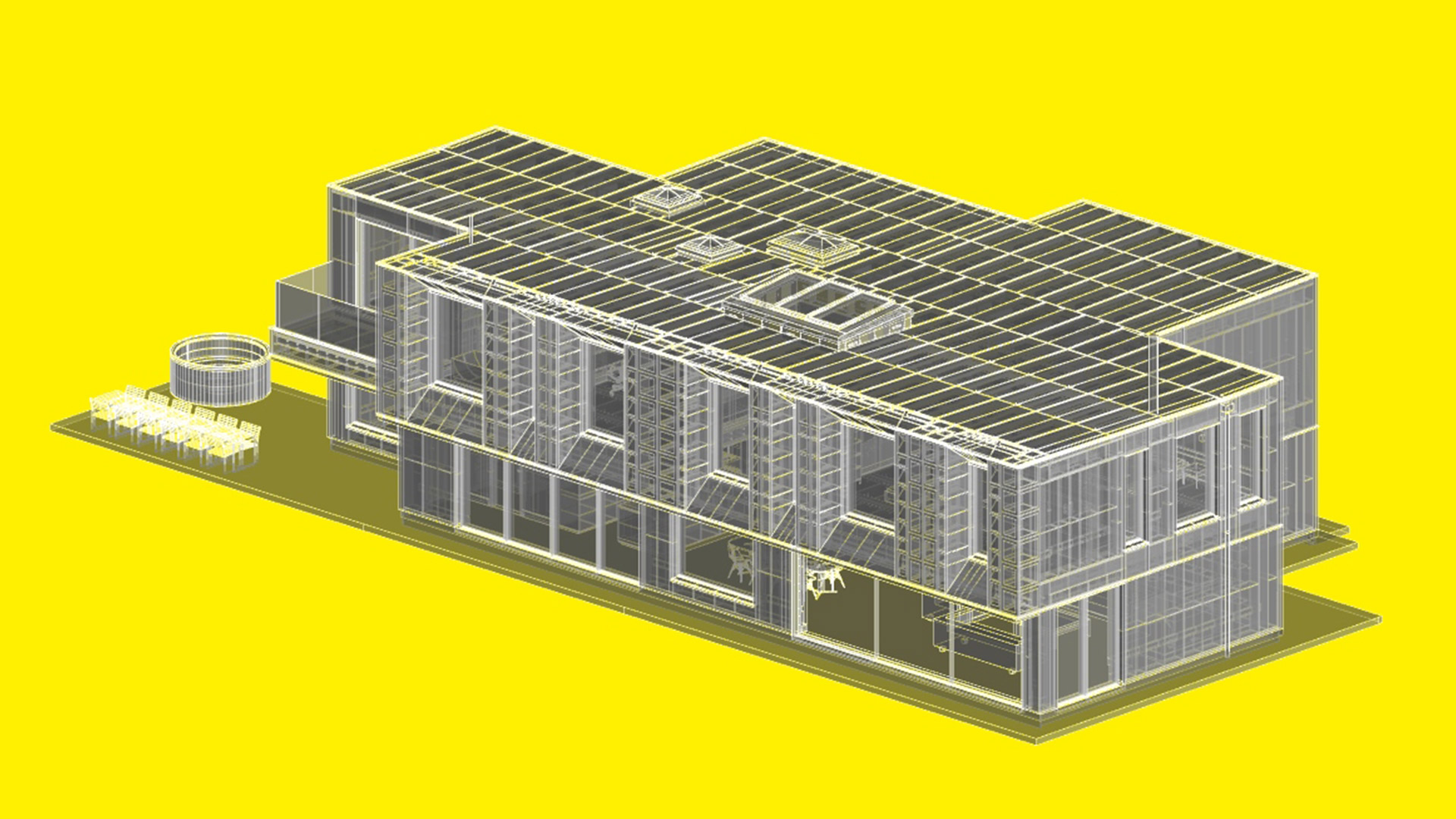As an industry, offsite modular is pretty much collapsing in the UK. There’s a serious scarcity of skilled labour, and the traditional construction industry racked up more insolvencies last year than any other sector. So what hope does the UK have of digitising fabrication and building the homes we need? Martyn Day speaks with Bruce Bell of Facit Homes
The first time I wrote about Facit Homes was back in 2013, when the company had just been highlighted on Channel 4’s Grand Designs as a design-build architectural firm. What set it apart from other design-build firms I knew about was that the house that featured in the TV programme was designed in BIM using Revit, but was digitally fabricated on site, using a CNC router housed in a shipping container. This CNC device cut out box sections from 2,440mm x 1,220mm timber sheets filled with masses of insulation.
More than ten years on, Facit Homes co-founder Bruce Bell is still designing and fabricating digitally. He has a profitable practice and has so far built housing collectively worth over £30 million, with build times typically two times faster than traditional methods.
At the time of our first conversation, Bell was not convinced that factory-produced houses were viable for reasons of standardisation, repetition, and boredom. The economics didn’t stack up either, he argued, with no one size fitting all when it comes to buildings, plus the costs of transportation, which might be up to 20% of overall price.
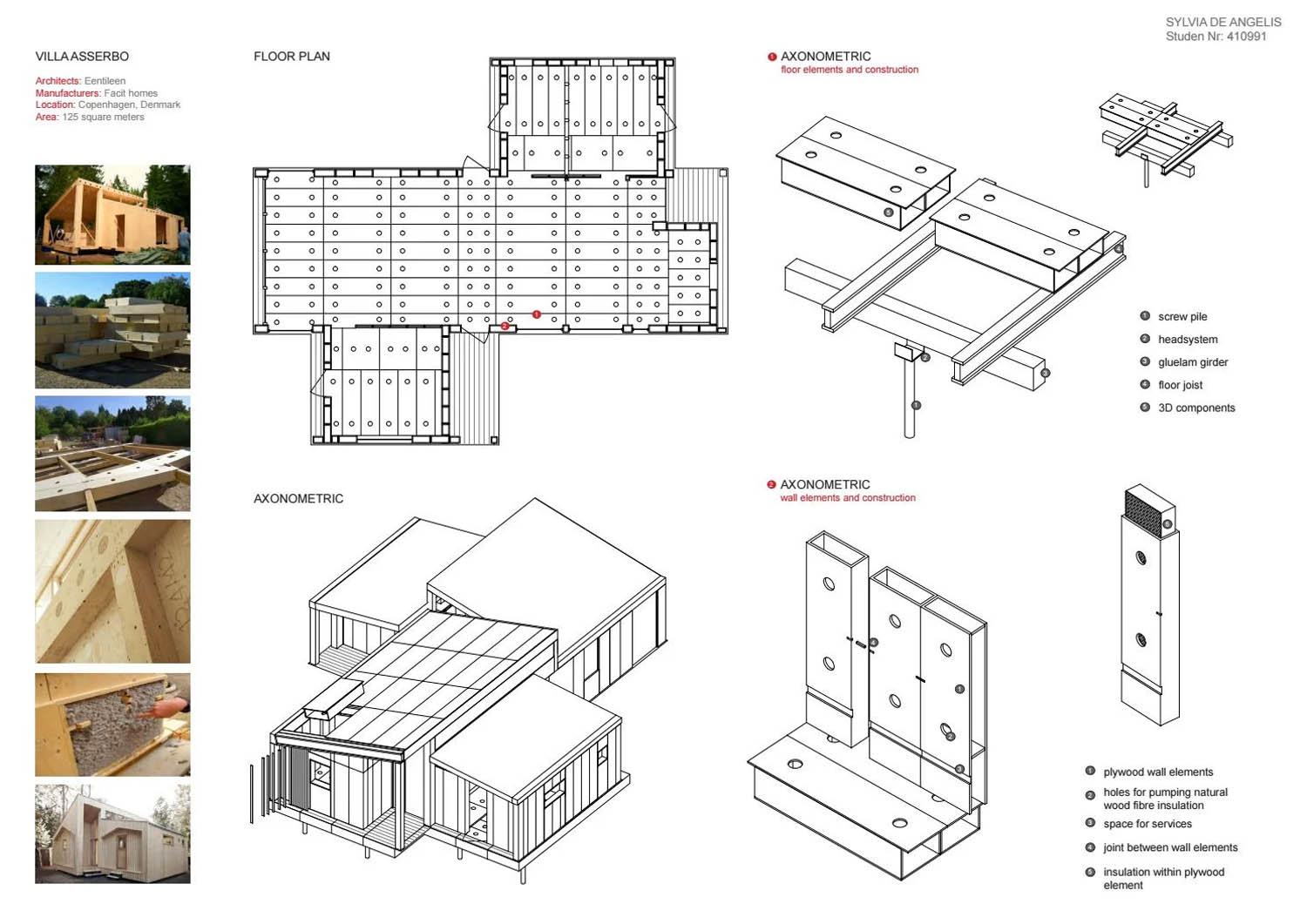
“There is a direct correlation between factory fabrication and repetition, because you can’t have factories sitting idle due to the overheads, and as soon as you have a factory, you need turnover. In order to have turnover, you need standardisation, and you end up producing the same thing over and over again,” he told me.
That said, neither of us could have known at that time that factory fabrication would become such a disaster in both the UK and USA — even when producing the same thing repeatedly.
A family of parts
Today, Facit Homes is still deeply reliant on Revit as its BIM weapon of choice, although it has expanded its repertoire to include generative tools such as Rhino Grasshopper. Bell has created a distinct family of parts and these are key to the fabrication of a chassis design for all homes created by Facit. With his special CNC code linked to Revit, Bell produces G-code at his London office, which is then sent to an on-site CNC router. Box sections are made with machine slots, and these vary from day to day, depending on the weather, for reasons of moisture content.
Since I last visited Facit’s offices, the company has built its own specification database. This has been fleshed out and expanded with every project the company has undertaken and includes components, suppliers, models – everything you need when specifying a building.
The net result of having this linked to Revit is that, by the time any BIM model is complete and fits the client’s specification, Facit Homes knows how much the building will cost to fabricate and to complete fit-and-finish to within 1%. It also has a full bill of materials quantities and a cost breakdown for the project. While the company relies on a chassis-based design, variations in designs show that this is not a limiting factor.
From house to houses
Bell has spoken at AEC Magazine’s NXT BLD event several times on the topic of digital construction, and he has always seemed like one hand clapping – because, unlike everyone else, he’s not been trying to build buildings in factories.
The time has now come for Facit to scale up its operation to offer services to developers – not just in planning sites, but also designing all housing, as well as construction projects.
Bell explains that, in his conversations with developers in the UK, today’s financially precarious construction firms can cost them millions if they collapse midproject. They suffer from labour shortages, which lead to delays and missed project timelines. So, for Facit Homes to scale up, it’s not so much a case of a bandwidth problem in design, because Revit combined with generative provides significant productivity benefits. Instead, the bottleneck for Facit lies in the on-site fabrication method, because one shipping container system may be ample for building a single residence, but when tens or scores of houses are planned, a different approach is necessary.

After a few years of mulling over the problem, Bell has engaged a fantastic robotics fabrication firm in the UK called Tharsus to devise a new, shippable digital fabrication unit. For those not in the know, Tharsus has designed and built pick-and-place robots for Ocado’s grocery delivery warehouses.
Bell originally envisaged four shipping containers’ worth of machinery in each unit. With the help of the team at Tharsus, however, this looks to have shrunk down during the design process to two containers.
As the design is nearly finalised, all that remains now is to put the first unit to work on its first contract. Without giving too much away, the first thing the new machine will fabricate is the temporary wooden structure that will keep the site’s assembly area dry. Set-up time is estimated at one week.
Its cutter can produce a much higher throughput of CNC cut sheets than the previous tool, and it also has a built-in printer, which prints the actual drawing on the sheet together with a unique QR code. Once complete, the sheets are autostacked for assembly.
The designated assembly area, meanwhile, uses video recognition and mixed reality technologies to assist the team in measuring and assembling sections before they are installed on the chassis.
Bell reckons that each machine is capable of building some £20 million worth of housing each year, or approximately 80 homes. The idea is obviously to have a number of these robots fabricated, so that Facit Homes can tackle bigger projects and win bigger customers, both nationally and internationally.
Bruce Bell is a mix of technologist, architect, and canny-but-cautious entrepreneur. The expansion and development of Facit Homes comes only after years of Bell analysing the market and figuring out how Facit might best address the opportunity without running the risk of a spectacular crash-and-burn scenario. The company’s biggest overhead has been the design and procurement of the new high-throughput fabrication systems. Bell will now be hoping to reap the rewards of that move.
Bell will be speaking about this exciting project at AEC Magazine’s NXT BLD conference on 25 June. By then, he will hopefully be able to show off prototypes for the fabrication machine and go into more depth on how digital fabrication of homes can be achieved without owning a factory and in such a way that, in the lean times, the costs don’t kill contractors.
